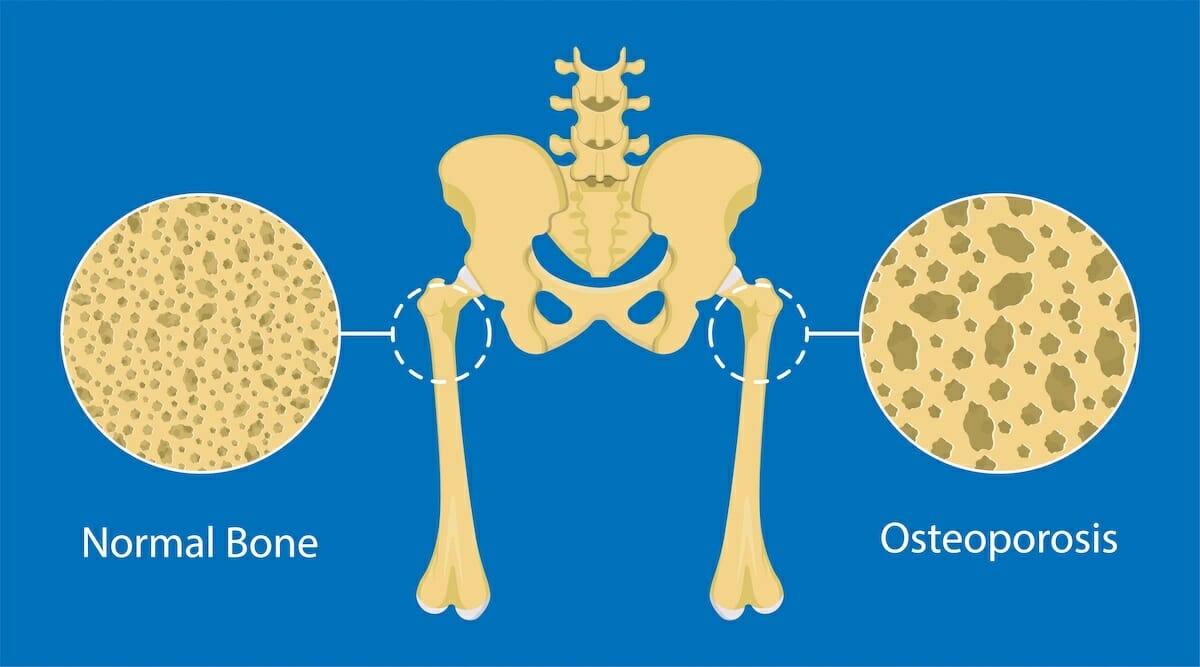
Osteoporosis is a condition that causes a decrease in bone mass and mineral density. While osteoporosis itself is not typically painful, a person may experience pain due to potential complications, such as breaking a bone.
Osteoporosis can cause a person’s bone to change in strength and structure. This can affect the composition of bone and reduce the amount of important minerals, such as calcium and phosphorous. This can make bones more fragile and increase the risk of experiencing a fracture.
While the condition does not typically have associations with pain, a person with osteoporosis may experience pain due to broken bones or other bone problems. A common type of fracture that may occur is a spinal compression fracture. These fractures affect the bones of the spine, also known as the vertebrae.
Spinal compression fractures may occur due to falls or even from certain actions such as reaching, coughing, twisting, or even sneezing. A person with this type of fracture may experience narrow and flatter vertebrae, loss of height, a rounded back, a hump, or a bent-forward posture. Spinal compression fractures may cause back pain near the site of the broken bone, and a person may feel pain in the lower back. The pain may also be the result of bones pressing on nerves, which in turn, sends pain signals to the brain.
Osteoporosis also commonly affects the bones of the hips and wrists, and fractures in these bones can also cause pain. The pain someone experiences may be mild and may resolve in four to six weeks, but in some cases, it may be lifelong.
A person with osteoporosis may receive medication from their doctor to treat the pain. Some of these medications may include nonsteroidal anti-inflammatory drugs (NSAIDs) and opioids.
A person with osteoporosis experiencing pain may also benefit from physical relief methods. Some options may include physical therapy, heat and cold treatment, brace or cast, acupuncture and/or massage may help alleviate pain symptoms.
In addition to physical pain, a person with osteoporosis may experience psychological symptoms, such as anxiety and depression. As such, they may also benefit from psychological treatment options, such as guided imagery, biofeedback, talk therapy (also known as psychotherapy). Instead of resolving pain itself, these approaches target improvements in physical, emotional, social, and occupational functioning.
Some types of fractures may require surgery to restore bone function and relieve pain. Some surgical options that a surgeon may perform for spinal fractures may include kyphoplasty and vertebroplasty.
Hip fractures may require surgical intervention, and these may include in-situ pinning and hip replacement. In-situ pinning involves a surgeon placing pins or screws in the site of the fracture to hold the bone in place. A hip replacement procedure involves replacing the damaged bone with a prosthetic component. This procedure may be necessary where hip pain is affecting everyday activities such as walking or bending.
In summary, treatment options depend on the type of pain or fracture someone is experiencing. To help a person manage pain, a doctor may consider a combination of pain medication, physical relief, psychological therapy, or surgery.
Sources: https://www.medicalnewstoday.com/articles/osteoporosis-pain;
Osteoporosis symptoms. (n.d.). https://theros.org.uk/information-and-support/osteoporosis/symptoms/;
Paolucci, T., et al. (2016). Management of chronic pain in osteoporosis: Challenges and solutions. https://www.ncbi.nlm.nih.gov/pmc/articles/PMC4824363/









